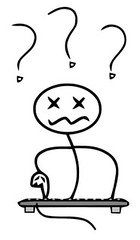| 8522197762 | Sonnet | 14 line lyric poem, fixed rhyme scheme, fixed meter (usually 10 syllables per line) | | 0 |
| 8522197763 | Ode | a lyric poem that is serious and thoughtful in tone and has a very precise, formal structure | | 1 |
| 8522197764 | Blank verse | unrhymed iambic pentameter | | 2 |
| 8522197765 | Free verse | no fixed meter or rhyme | | 3 |
| 8522197766 | Epic | a long narrative poem celebrating the adventures and acheivements of a hero | | 4 |
| 8522197767 | Dramatic monologue | character "speaks" through the poem; a character study | | 5 |
| 8522197769 | Ballad | a form of verse, often a narrative story and set to music | | 6 |
| 8522197770 | Villanelle | consisting of five tercets and one quatrain, with only two rhymes | | 7 |
| 8522197771 | Meter | regularized rhythm of stressed and unstressed syllables; accents occur at approx. equal intervals of time | | 8 |
| 8522197773 | Conceit | an extended witty, paradoxical, or startling metaphor | | 9 |
| 8522197774 | Assonance | repetition at close intervals of vowel sounds | | 10 |
| 8522197775 | Paradox | statement or situation containing seemingly contradictory elements | | 11 |
| 8522197780 | Stanza | a group of lines forming a unit in a poem | | 12 |
| 8522197781 | Caesura | a natural pause in the middle of a line, sometimes coinciding with punctuation | | 13 |
| 8522197782 | Enjambment | describes a line of poetry in which the sense and grammatical construction continues on to the next line | | 14 |
| 8522197785 | Internal rhyme | repetition of sounds within a line (but not at the end of the line) | | 15 |
| 8522197786 | Couplet | two successive lines which rhyme, usually at the end of a work | | 16 |
| 8522197787 | Tercet | three-line stanza | | 17 |
| 8522197789 | Rhyme scheme | a pattern of rhymes formed by the end rhyme(aa,bb,cc) | | 18 |
| 8522197790 | Consonance | repetition at close intervals of final consonant sounds | | 19 |
| 8522197792 | Oxymoron | compact paradoxl two successive words contradict each other | | 20 |
| 8522197794 | Quatrain | four-line stanza | | 21 |
| 8522197795 | Cinquain | five-line stanza | | 22 |
| 8522197796 | Sestet | six-line stanza | | 23 |
| 8522197798 | Apostrophe | someone absent, dead, or imaginary, or an abstraction, is being addressed as if it could reply | | 24 |
| 8522197799 | Metonymy | symbolism; one thing is used as a substitute for another with which it is closely identified (the White House) | | 25 |
| 8522197800 | Synecdoche | symbolism; the part signifies the whole, or the whole the part (all hands on board) | | 26 |
| 8522197801 | Hyperbole | exaggeration, overstatement | | 27 |
| 8522197802 | Litotes | understatement in which an affirmative is expressed by negating its opposite | | 28 |
| 8522197809 | Allusion | makes reference to another piece of literature, a person, or event in history, sports, television, etc. | | 29 |
| 8522197810 | Tone | writer's attitude toward the audience or subject, implied or related directly | | 30 |
| 8522197815 | Motif | detail within the story that repeats itself throughout the work | | 31 |
| 8522197816 | Sestina | consists of six 6-line stanzas, concluding with a 3-line "envoi" which incorporates all the line-ending words;rather than simply rhyming, the actual line-ending words are repeated in successive stanzas in a designated rotating order | | 32 |
| 8522197821 | Romanticism | a return to nature and to belief in the goodness of humanity; the rediscovery of the artist as a supremely individual creator; the development of nationalistic pride; and the exaltation of the senses and emotions over reason and intellect | | 33 |
| 8522197822 | Gothic | genre of literature that combines elements of both horror and romance | | 34 |
| 8522197824 | Theme | the main idea or message found in the work | | 35 |
| 8522197827 | Connotation | what a word suggests beyond its surface definition | | 36 |
| 8522197829 | Allegory | characters are symbols, has a moral | | 37 |
| 8522197830 | Foil | a character that contrasts with another character, usually the protagonist, and so highlights various facets of the main character's personality | | 38 |
| 8522197838 | Extended metaphor | uses an entire poem to develop a single metaphor | | 39 |
| 8522197845 | Denotation | basic definition or dictionary meaning of a word | | 40 |
| 8522197846 | Anastrophe | Inversion of the normal syntactic order of words, for example: To market went she | | 41 |
| 8522197849 | Renaissance | a period of artistic, cultural, and philosophical rebirth of classical ideas and art forms, commonly associated with Harlem in the early 20th Century. | | 42 |
| 8522197851 | Mood | the atmosphere suggested by the structure and style of the poem | | 43 |
| 8522197853 | Regionalism | fiction or poetry that focuses on specific features including characters, dialects, customs and topography - of a particular region | | 44 |
| 8522197854 | Stream of conciousness | the thoughts and feelings of a character as they occur | | 45 |
| 8522197867 | lyric poetry | presents a personal impression, highly personal and emotional, can be as simple as a sensory impression or as elevated as an ode (addresses subjects of elevated stature) or elegy. subjective and melodious, it is often reflective in tone. | | 46 |
| 8530384313 | Elegy | a mournful or somber poem, usually written in remembrance of someone or something that has died. Used as a lament. | | 47 |
| 8530406490 | Anaphora | a literary and rhetorical device in which a word or group of words is repeated at the beginning of two or more successive clauses or sentences. | | 48 |
| 8530413363 | Epistrophe | a figure of speech that involves the repetition of a word or phrase at the end of successive clauses or sentences. | | 49 |






















































